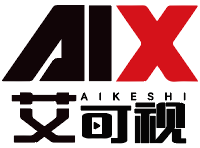In the dynamic and competitive landscape of the modern business world, effective communication stands as the cornerstone of success. As companies strive to streamline operations, foster collaboration, and drive innovation, the need for advanced communication tools has become more pressing than ever. Smart TV touch screens have emerged as a revolutionary solution, seamlessly blending the accessibility of traditional televisions with interactive capabilities that far surpass those of conventional whiteboards and projectors. This article delves into how these cutting-edge devices can transform various aspects of business communication, from meetings and presentations to remote collaboration and employee training, ultimately boosting productivity and engagement within organizations.
Transforming Presentations into Interactive Experiences
One of the primary ways smart TV touch screens enhance business communication is by revolutionizing the presentation process. Gone are the days of relying on blurry projector slides and static visual aids. Smart TV touch screens feature large, high-definition displays that showcase graphics, videos, and text with stunning clarity and vivid colors. This visual superiority immediately captures the audience's attention and makes the content more engaging.
Moreover, the touchscreen functionality adds a new dimension to presentations. Speakers can effortlessly navigate through slides, zoom in on details, and annotate directly on the screen, creating a more dynamic and interactive experience. For instance, during a product launch presentation, the presenter can use the touch screen to highlight key features, answer audience questions in real-time by marking up relevant sections, and even invite attendees to come forward and interact with the display. This hands-on approach not only keeps the audience actively involved but also encourages two-way communication, fostering a collaborative atmosphere essential for successful meetings.
The seamless integration of smart TV touch screens with various devices, such as smartphones, laptops, and cloud-based applications, further amplifies their utility. Presenters can quickly mirror their screens, share files, and access real-time data without the hassle of complex setup procedures. This flexibility allows for a more fluid and spontaneous presentation style, enabling speakers to adapt to the audience's interests and feedback on the fly.
Bridging the Gap in Remote Collaboration
In an era where remote work has become the norm, effective communication between in-office and remote team members is crucial for maintaining productivity and cohesion. Smart TV touch screens, when integrated with video-call software, serve as a powerful bridge, making remote interactions feel more like face-to-face meetings.
Equipped with high-resolution cameras, crystal-clear speakers, and responsive touch capabilities, these screens enable remote participants to see and hear their colleagues clearly, read presentations in detail, and actively engage in discussions. The ability to annotate on shared documents or presentations in real-time, regardless of physical location, eliminates the sense of distance and promotes seamless collaboration. For example, a marketing team spread across different cities can use a smart TV touch screen to jointly brainstorm ideas, mark up campaign drafts, and provide instant feedback, just as they would in a physical meeting room.
This enhanced remote communication not only improves the efficiency of teamwork but also strengthens team bonds. By enabling everyone to contribute equally, regardless of their location, smart TV touch screens help create a more inclusive work environment where every voice is heard, morale is boosted, and the sense of unity within the team is fortified.
Centralizing Information and Fostering Transparency
Smart TV touch screens also function as centralized hubs for information dissemination within organizations. Acting like digital notice boards accessible to all employees, they display real-time data, the latest company updates, and shared documents. This immediate access to crucial information ensures that everyone is on the same page, reducing the time wasted on searching for data and enabling faster decision-making.
For instance, in a sales department, a smart TV touch screen in the office can display live sales figures, upcoming targets, and customer feedback in real-time. Employees can quickly glance at the screen to stay informed about their performance and the overall progress of the team. This transparency not only promotes accountability but also nurtures a culture of openness and collaboration, where employees feel empowered to contribute and work together towards common goals.
Versatility Beyond the Boardroom
The utility of smart TV touch screens extends far beyond traditional meetings and presentations. They can be leveraged in a multitude of business scenarios, such as training sessions, brainstorming workshops, and team-building activities.
During training classes, instructors can use the touch screen to present interactive lessons, conduct quizzes, and run live polls. The ability to engage learners through hands-on activities, like drag-and-drop exercises or interactive simulations, makes the training more effective and memorable. In brainstorming sessions, teams can use the screen to collectively jot down ideas, vote on concepts, and organize thoughts in real-time, fostering a creative and collaborative environment. Even in off-site team-building exercises, smart TV touch screens can be used to play interactive games, share photos and videos, and strengthen team camaraderie.
The Future of Business Communication
As the business world continues to embrace digital transformation, the adoption of smart TV touch screens is expected to soar. Industry experts predict that as more leaders recognize the time and cost savings associated with efficient communication tools, these devices will become an integral part of every workplace, from corporate offices to home workspaces.
The integration of emerging technologies, such as artificial intelligence and augmented reality, with smart TV touch screens holds the promise of further enhancing their capabilities. Imagine a future where AI algorithms can analyze audience reactions during a presentation and provide real-time suggestions for improvement, or where augmented reality overlays additional information on the screen, creating a more immersive and interactive communication experience.
In conclusion, smart TV touch screens have the potential to redefine business communication, offering a seamless, interactive, and efficient way for teams to connect, collaborate, and innovate. Companies that embrace these advanced devices will not only gain a competitive edge but also create a more engaging and productive work environment, paving the way for sustained growth and success in the digital age.


